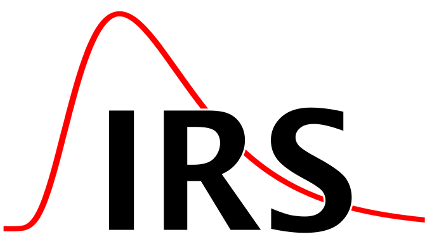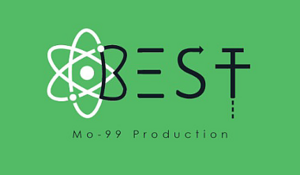-
Speciation of plutonium: Investigations of the formation, stability and radiolysis of colloids of different plutonium isotopesThe aqueous chemistry of plutonium is very complex as it can be present in several oxidation states at the same time. Therefore it can form many different species, varying in properties like solubility, mobility etc. Colloids are formed from an over-saturated aqueous solution of tetravalent plutonium and play an important role in increased mobility which could lead to a release of plutonium from the final storage of radioactive waste. In previous studies, executed independently of each other, results of colloids of 239Pu and 242Pu particular for structure were contradictory. The main difference between these isotopes is their specific activity, which indicates that varying amounts of alpha radiation could have an influence on the formation and the aging processes of the colloids. However, different isotopes of plutonium were used and the experiments were carried out in various media. This project, funded by the Siebold-Sasse-Foundation, is intended to gain detailed knowledge of the formation mechanism and structures of colloids produced in different media (nitrate, chloride, perchlorate).Team:Year: 2019Funding: Siebold-Sasse-StiftungDuration: 01.06.2019 – 31.05.2022
![]()
![]()
-
Secondary Ionisation of Radioactive Isotopes for Ultra trace analysis with Spatial resolution (SIRIUS)The behaviour of plutonium in the environment is of high importance in the field of radioecology. Previous studies show that a sole ultra-trace analysis of plutonium does not give answers to all issues in question. It is due to the complex chemical binding properties, that detailed speciation analysis is inevitable to understand the behaviour in the environment properly.Led by: Prof. Dr. Clemens WaltherTeam:Year: 2019Funding: BMBF 2020+ 02NUK044ADuration: 01.01.2016 - 31.12.2019
![]()
![]()
-
Speziation und Transfer von Radionukliden im Menschen unter besonderer Berücksichtigung von Dekorporationsmitteln (RADEKOR)If radionuclides (RNs) enter the human body through the food chain, they can pose a radiotoxic and chemotoxic hazard. To accurately assess the health risks of oral intake of RNs via food and to apply effective decontamination procedures, an understanding of the biokinetics of RNs at the cellular and molecular level is essential. In the planned collaborative project, foods that naturally contain radionuclides will be administered. These include, for example, Brazil nuts or certain medicinal waters with high (but not harmful) radium content. After this oral incorporation, not only quantitative excretion analyses and biokinetic modeling will be performed, but also the molecular speciation of RNs in the digestive tract and their interactions with cells of the gastrointestinal tract in the presence and absence of common decorporation agents will be investigated. The aim of this work is to contribute to the development of a precise biokinetic model and the development or improvement of nuclide-specific decontamination strategies by achieving a deeper process understanding of RN interactions in the digestive tract at the molecular and cellular level.Led by: Prof. Dr. Clemens WaltherTeam:Year: 2020Funding: BMBF FöKZ 02NUK057CDuration: 01.07.2020-31.12.2023
![]()
![]()
-
Radionuclide Remediation using natural Association processes (RENA)The aim of the project is to develop a process for the ex situ treatment of radionuclide-contaminated soil from the dismantling of nuclear facilities. For this purpose, the potential of biology (plants, fungi) for the mobilization and removal of radionuclides from soils is investigated. The aim is to significantly reduce the volume of intermediate and low-level radioactive waste. Our investigations are based on soils that have already been excavated and pretreated. The polycyclic aromatic hydrocarbons (PAHs) originating from the construction sector are considered as characteristic and additional organic contamination. The holistic approach, which combines soil microbiological, mineralogical, geo- and radiochemical aspects, is being prepared for implementation in a reactive transport model. With such numerical approach, predictions about the efficiency, quantitative influencing factors and in particular transferability to other soil materials from deconstruction projects should be possible.Led by: Prof. Dr. Clemens WaltherTeam:Year: 2021Funding: Bundesministerium für Bildung und Forschung, Förderkennzeichen 02NUK066CDuration: 01.09.2021-31.08.2024
-
Transfer of long-lived radionuclides from the vadose zone into the rhizosphere and their uptake by plants under consideration of microbiological processes (TRAVARIS)Based on the findings from TransLARA on the transport and transfer of radionuclides in the soil-plant system, the interaction of radionuclides with root exudates and their influence on microbial communities in the rhizosphere, as well as vice versa the microbial influence on processes in the soil, will be investigated in laboratory experiments in the TRAVARIS joint project. Furthermore, fluctuating groundwater levels, and thus changes in the redox potential in the soil can lead to a potential remobilisation of certain radionuclides. By varying the water level in laboratory lysimeters, the potential re-mobilisation and transport of the tracers present are observed. The combination of modelling and experimental work in the consortium for a more detailed understanding of the soil- and nuclide-specific uptake of radionuclides in plants, also taking microbial processes into account, thus contributes to an improved predictive power of radioecological models and more reliable risk assessments for the general public and the environment.Led by: Prof. Dr. Clemens WaltherTeam:Year: 2022Funding: BMBF 2020+ 15S9437BDuration: 01.11.2022 - 31.10.2025
-
99MoBestBackground: For nuclear medicine diagnostics, the radionuclide 99Mo is indispensable as the parent of Tc-99m. Currently, the demand in Germany is about 6E13 Bq per week, which corresponds to 60,000 treatments. So far, this radionuclide is produced exclusively in nuclear reactors worldwide. However, this production method and the necessary processing are associated with large amounts of radioactive waste. The avoidance and reduction of this waste are of central interest. The collaborative project 99MoBest aims to develop a process for the sustainable and cost-effective production of 99Mo for radiodiagnostics. Accelerator-based neutron radiation sources enable production without fissile material with the least possible generation of radioactive waste products. Contribution of the IRS: The development of a new process must constantly be measured against the existing standard, reactor production. Due to this objective, radiation protection aspects must be aligned with production efficiencies during manufacturing and handling. For this purpose, the radiation fields are to be calculated through appropriate modeling and then experimentally validated to estimate local dose rates and ensure safe handling. These models should also allow for the prediction of material activation, thus supporting the selection of suitable structural materials already in the planning phase. Minimizing (especially long-lived) radioactive waste then simplifies decommissioning, disposal, and clearance.Team:Year: 2024Funding: BMBF 02NUK080CDuration: 01.03.2023 – 28.02.2026
![]()
![]()









